Hi,
I have a running route which is exactly 4.0 miles. However the Instict records about 3.7 miles. This means my pace is down on what it should be too. I've updated the Instinct to the latest firmware and tried GPS+GLOASS. Any ideas?
Hi,
I have a running route which is exactly 4.0 miles. However the Instict records about 3.7 miles. This means my pace is down on what it should be too. I've updated the Instinct to the latest firmware and tried GPS+GLOASS. Any ideas?
Here are the pace drop examples I referred to.
As I explained in the other post of yours, the drops in pace could be easily caused by the loss of GPS signal - for example in narrow streets…
The distance is 4 miles over map distance.
Yes, I already saw several threads with similar claims, but until now, none of the posters was able to bring a definitive evidence. Measuring the…
Hi, I think there is definitely something about newer Garmin gps watches, apparently the chips have changed so that may be it, that is resulting in this under recording of distance. Not just the Instinct…

Hi, I think there is definitely something about newer Garmin gps watches, apparently the chips have changed so that may be it, that is resulting in this under recording of distance. Not just the Instinct (have a look at the Fenix forums for example and some of the more specialist running watch forums). Some of the points that have already been made are good ones though. Being sure of the distance and making sure you have a good gps signal - and the latter includes allowing some ‘soak’ time after your watch indicates that it has locked onto gps to maximise the number of satellites being used to provide positioning data.
However, I think there is more inherent inaccuracy in these newer watches than there used to be and certainly much more than I used to see with my tomtom watch. A lot of the time the errors don’t really make much difference and even the pace differences you mention are pretty minimal to be honest - expecting to see accurate real time pace with a gps watch is a bit unrealistic anyway, it’s best to focus on lap times (you set this to whatever you like but each 1km gives you a reasonably accurate idea of how you’re doing). Saying all that, I definitely see underreporting of distances in races with certified measured differences. I ran about 17 races last year and my instinct underreported the distance for all of them by just enough that, where applicable, they didn’t register as PBs on Strava which was a bit annoying. If I corrected the data in Strava (using the auto distance corrector they have - this I believe uses average data collected from the watches of all the people who have run the route) the distances were spot on but the PBs don’t register that way :(. Not a massive issue mind you and the differences weren’t huge so not really a reason to throw the toys out of the pram but mildly annoying.
I’ve tried messing around with various settings like 3D distance and so on but that didn’t appear to make any difference - you’d expect this to make all the runs look longer but that wasn’t the case (although maybe only with big enough hills?). I then saw the various threads about problems people were having with the altimeter and generally I had noticed that while distances were underreporting a bit, the altitude gains were often much worse and the traces on Strava were very noisy (this would account for the extra ‘height’ added) especially after the first few miles. This I believe is possibly related to the issue regarding the positioning of the barometer sensor opening and sweat building up here and messing with the functioning of the sensor. This seemed feasible to me as I get pretty sweaty when I run. I had a look at the various threads that talk about this and almost bought one of the 3D printed clip on covers to prevent sweat build ups in this sensor hole but in the end I just stuck a small square of black gaffer tape over it. This leaves a small opening on the side of the watch which allows air into the sensor but seems to prevent sweat from getting in there quite nicely. (See photo below)
Since I did that my altitude traces have been much smoother and the measurements have all been a lot more accurate. Correcting either measurement in Strava has hardly resulted in any change at all so I’ve stopped doing that now as I trust the measurements a lot more. The piece of tape doesn’t show as it’s against your wrist and it’s surprisingly resilient. I shower and swim with my watch on and it stays on as the hole it covers is really small so there isn’t much room for water ingress under the tape. I only have to replace it infrequently and I’m a lot happier with my watch’s performance. It also doesn’t interfere with the heart rate monitor. It’s easy to try so I’d recommend giving it a go alongside the other suggestions.
Of course there have been software updates in the meantime as well so it’s hard to be sure exactly where the improvements have originated but I’m reasonably convinced about the tape effect. I’ve had a bit of a dodgy knee recently so haven’t been running enough to build up a really good data set to test this but I’d suggest doing a run without the tape and then doing the same one with it and compare the data afterwards. It may only apply to very sweaty people like me? :). I also haven’t run any measured races recently (they’ve all been cancelled in the current pandemic) so haven’t had the opportunity to test it under race conditions and I unfortunately don’t have access to a track either.
I’d be really interested to hear how you and others get on.
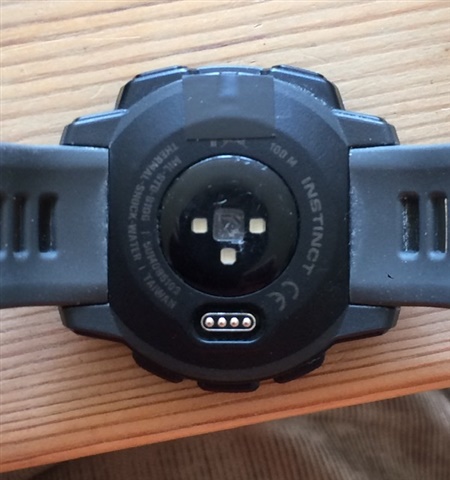
I don't mean to be rude, but your 'wall of text' is extremely taxing to read. Please be kinder and use paragraphs :-)

Jeez, some people are never happy ;). You could always cut and paste it into a text editor of your choice, reformat, change the font, add some colour? Knock yourself out :)
Well, again - not to be rude, but if you're unwilling to write legibly, the easier option is the one I took: not reading it :-)
My presumption - based upon you taking the time to post your above comment, was that you desired it to be read and commented upon. Perhaps I am in error :-)
Show me the photo of how you secured your watch because it is interesting for me.
I edited my original post and added a photo for you. Very hi-tec :)

I added some spaces for you

Thanks for the update, I guess that one would need to stick to a particular measured segment and compare the times, which with the map + time in the garmin display one can keep better track of.

I think you can see the effects if you just do any run with and without the tape in place. I’ve added some screenshots from Strava below. The first two pictures are without the tape in place. You can see how noisy the altitude data gets from about 2.5 miles onwards as I get nice and sweaty. The distance elevation calculated in Strava is 436ft which is way too much but is because of all the noise in the data. In the second two pictures you can see the data for the same run with the tape in place. The altitude trace remains much smoother throughout and the overall elevation gain is 210ft which is spot on. Interestingly the distance recorded in the second case is longer which I don’t quite get but the difference is perhaps not significant so I wouldn’t read too much into that. Hope that makes things clearer?

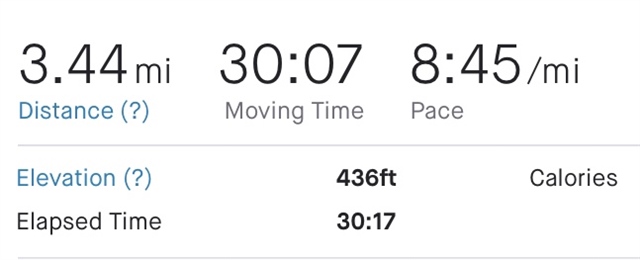

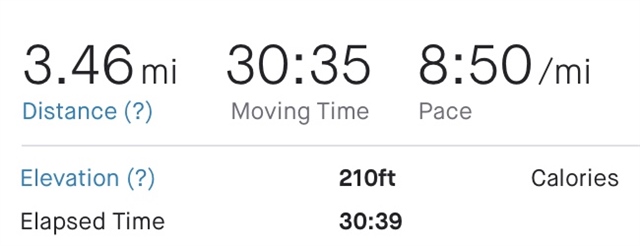
I thought Strava uses GPS elevation and not the Instincts Barometer, as the elevation graph in Strava often looks more like the actual hills I just ran.
For example, my return run from the other day, the first dip and climb looks much closer to the hill I ran up.
Strava.
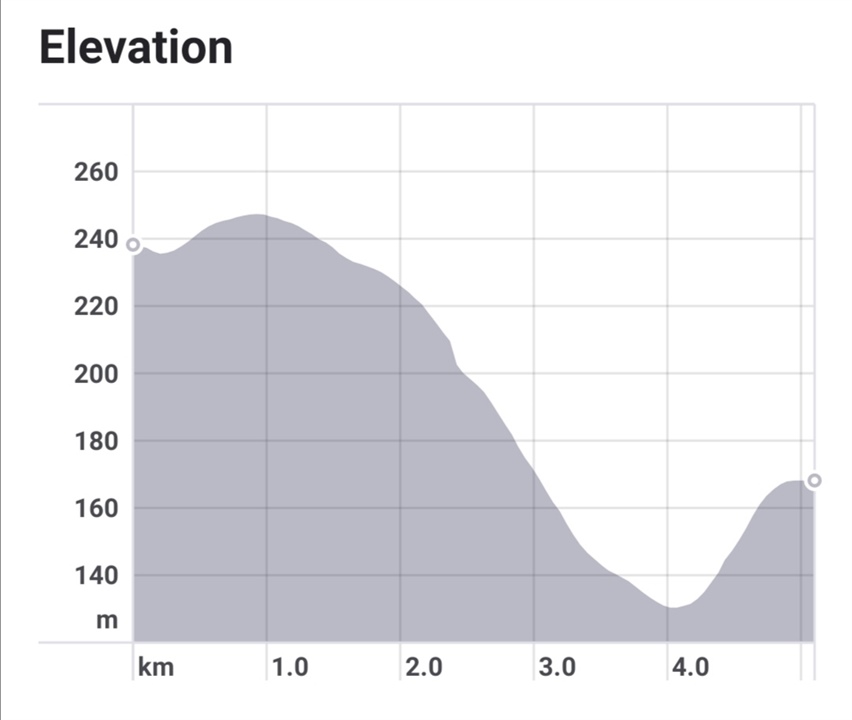
Connect.
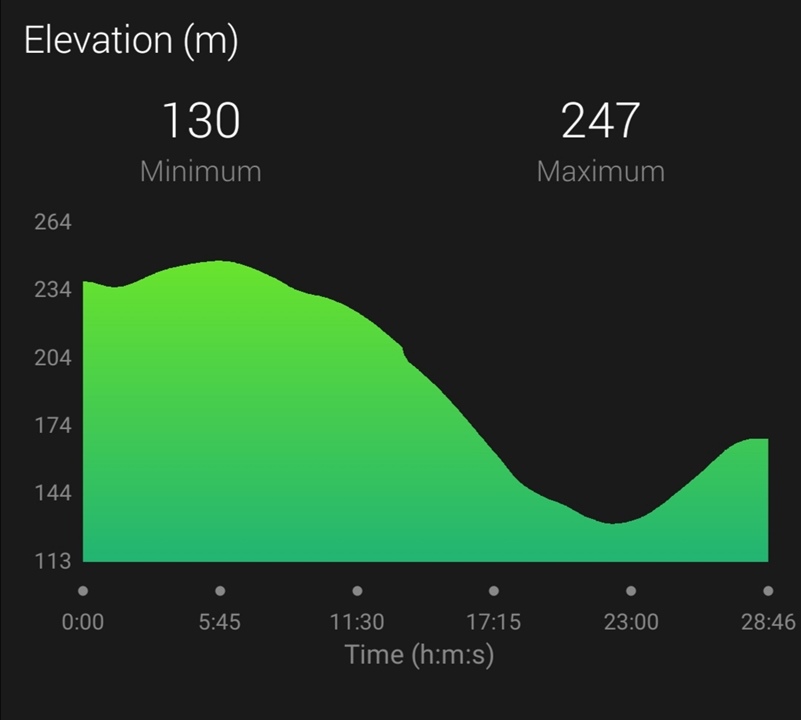
Also, if you are not happy with the Instincts recording of the elevation data, you can 'fix' the activity afterwards by going into the browser based version of Garmin Connect, selecting the activity and at the bottom enabling 'elevation corrections'. This I understand, will then use the GPS elevation data.
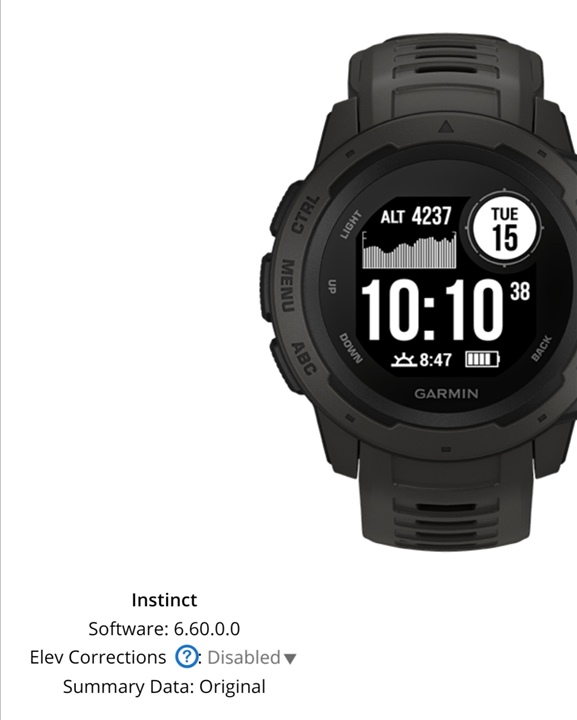
In regards to your gaffa tape solution, I'm not sure blocking and sensor hole is a good idea especially if glue over time gets in the hole. I did try something similar the other day to raise the side of the watch with the sensor slightly off the wrist with gaffa tape but then removed it a few mins later.